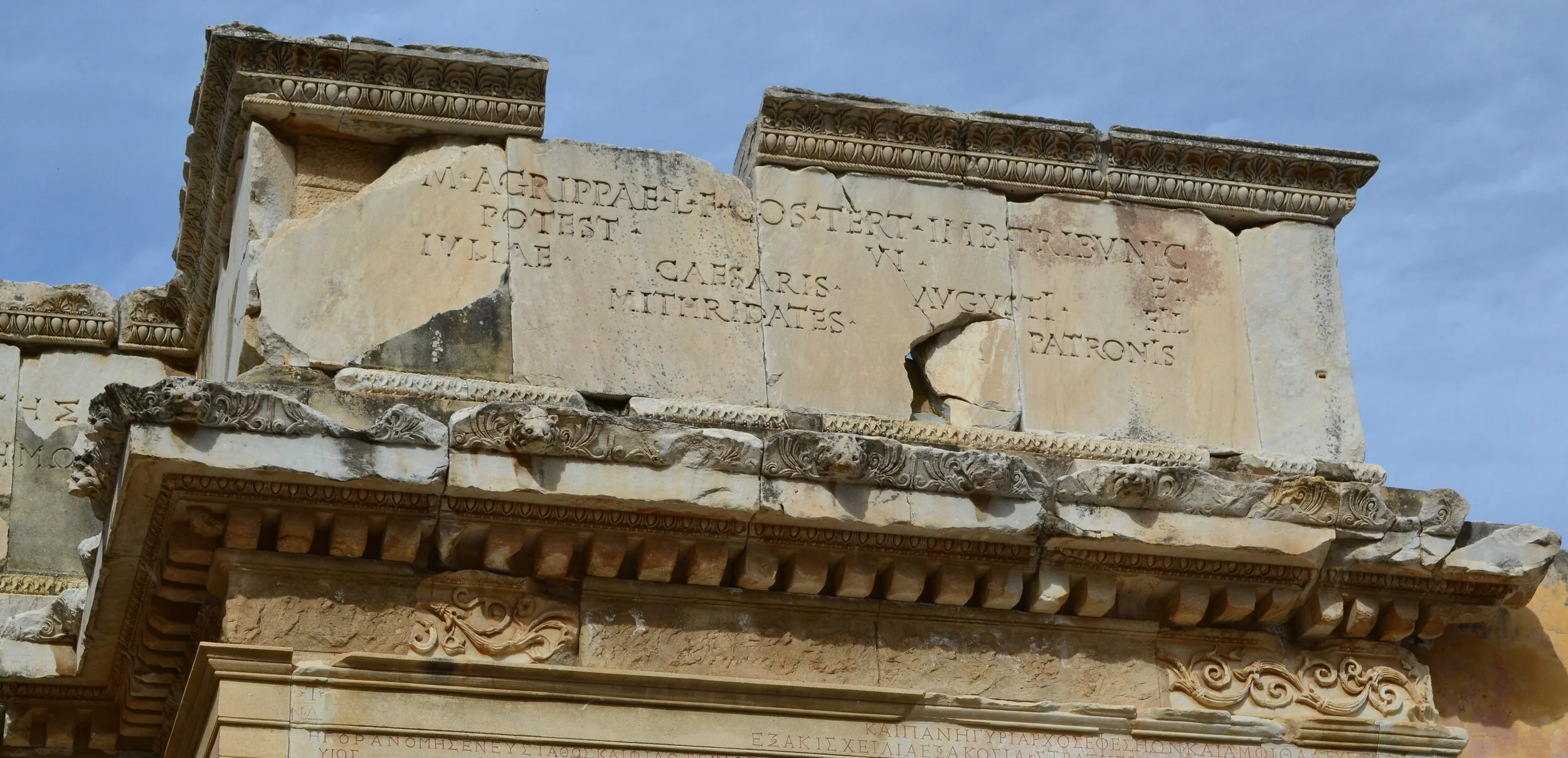My study of “desire” (epithymeō, ho epithymētēs, epithymia, hereafter “desire”) in the Roman Empire arose because of the lack – at least as far as I am aware – of a single thesis or book examining the use of these lexemes within the Greek literature of the early Roman Empire.
Read MorePublication | The Slow Fall of Babel: Languages and Identities in Late Antique Christianity
What does it mean to be labeled a foreign language speaker in late antique Christianity? How was one’s status as a native or non-native speaker determined? Was such a person considered a heretic? A barbarian? A Christian of equal standing? A saint or a demon?
Read MorePublication | The Epistles for All Christians
How did the Gospels circulate? Is there any way to determine how they might have or what the evangelists expected for their circulation?
Read MorePublication | Interpreting the Gospel of John in Antioch and Alexandria
After Frances Young’s Biblical Exegesis and the Formation of Christian Culture, is there anything else to say about the issue of the two so-called ancient “schools” of exegesis in Alexandria and Antioch?
Read MorePublication | Power and Peril: Temple Discourse in 1 Corinthians
That is to say, a “temple” is not a neutral space, but rather a charged, liminality where ritualized encounters with the divine entail both power and peril. The language Paul uses to describe the Corinthian assembly stands not just as symbolic metaphor, but it also describes their present experiences. I demonstrate how this temple discourse comes to the fore in particular sections of Paul’s first letter to the Corinthians.
Read MorePublication Preview | On My Right Michael, On My Left Gabriel
“In the course of my research, I have been struck by how much American Jews’ response to the topic of angels in Jewish culture depends on their understanding of Judaism vis-à-vis modern Protestant Christian conceptualizations.”
Read MoreInterpreting the New Testament Through Inscriptions: An Introduction
My new book, Studying the New Testament Through Inscriptions: An Introduction, introduces Greco-Roman inscriptions to a broader audience, interprets them as archaeological artifacts, and then demonstrates the benefit of epigraphs for interpreting the New Testament through five case studies.
Read MoreTime and Difference in Rabbinic Judaism
Time and Difference in Rabbinic Judaism examines conceptions and organizations of time in rabbinic sources, composed between 200 and 600 CE in Palestine and Babylonia but with lasting influence on subsequent Jewish communities, to the present day.
Read MoreReading Biblical Texts with a Focus on Status and Gender
Equipped with the insights of material evidence and theoretical reflection, I thereby approach Luke-Acts as a text ripe for re-valuation.
Read MoreOn Time, Change, History, and Conversion
It is time for us to open up the study of temporality in antiquity, recognizing the need not just for a more properly cross-traditional and interdisciplinary encounter with the topic of time, but even more so for a full cataloguing of the cultural and material contours in which certain questions surrounding time came to be posed in the first place.
Read MoreMishnah, Midrash, and How to Read Tannaitic Literature
“What is the conception of Torah that allows for the creation of such an expansive legal system that is detached from the Bible?”
Read MorePublications | The Mediterranean Diaspora in Late Antiquity
I didn’t fully anticipate what became a central thesis of the book: that Jews were neither the first, nor the only, nor the greatest targets of these pressures. On the contrary, the pressures on Jews were part of a larger project to transform the entire Roman Empire (if not the entire known world) into a homogeneous orthodox catholic polity.
Read MorePublications | Jewish-Christian Dialogues in Late Antiquity
What is the nature of talmudic stories about minim and their interactions with rabbinic figures? Are these literary depictions of actual historical polemics, or are they merely Jewish rabbinic fantasies meant to ridicule the “other”? Are they something else entirely? This question, I believe, has fundamental ramifications for both historical research into Jewish-Christian interactions in Late Antiquity and the literary study of the composition of the talmudic corpora.
Read MorePublications | Mary, Mother of Martyrs
My book is about this question: why tie mothers so easily and naturally to notions of self-sacrifice? Why assume that mothers will resemble the martyrs?
Read MoreJustice for The Poor
Benjamin Porat provides a preview of his new book, Justice for the Poor: The Principles of Welfare Regulations from Biblical Law to Rabbinic Literature [hebrew].
Read MorePublications | Christian Dialogues and Late Antiquity
The volume is conceived as a comprehensive guide to Christian dialogues composed in Greek and in Syriac from the earliest examples in the second century until the end of the sixth century.
Read More“The Time Is Fulfilled”: Jesus’s Apocalypticism in the Context of Continental Philosophy
In this book, I aim to expand beyond the traditional critical-exegetical methods (while these always remain indispensable) to show how Continental philosophy, with its emphasis on disrupting metaphysical and dualistic orders, offers a useful hermeneutical resource that poses new lines of questioning to the biblical texts.
Read MoreThe Masada Myth(s)
Jodi Magness discusses the myths of Masada while offering a preview of her recent book, Masada: From Jewish Revolt to Modern Myth (Princeton University Press, 2019).
Read MoreFood and Transformation in Ancient Mediterranean Literature
In other words, if transformational eating like hierophagy is something that ancient authors took for granted, why is it that eating or tasting other-worldly food has such a profound effect?
Read MoreHow to Get a Head in Ancient Israel: Women-Turned-Warriors and Queer Theory
Judith and the Head of Holofernes by Gustav Klimt.
Judith and the Head of Holofernes by Gustav Klimt.
Caryn Tamber-Rosenau provides an overview of her recent publication, Women in Drag: Gender and Performance in the Hebrew Bible and Early Jewish Literature (Gorgias, 2018).
Read More

![Guercino, Saint Paul (ca. 1591-1666 CE) [Wikimedia]](https://images.squarespace-cdn.com/content/v1/5449167fe4b078c86b41f810/1625346930471-3KOGD69T3Y7CC1IPPOE9/Saint_Paul_MET_DP810223.jpg)

![Temple of Apollo in Corinth [Wikimedia].](https://images.squarespace-cdn.com/content/v1/5449167fe4b078c86b41f810/1628069683908-8PP8R0YN0NDSUVC6YO3V/Picture1.png)











